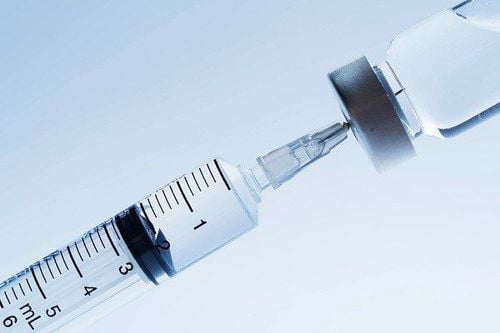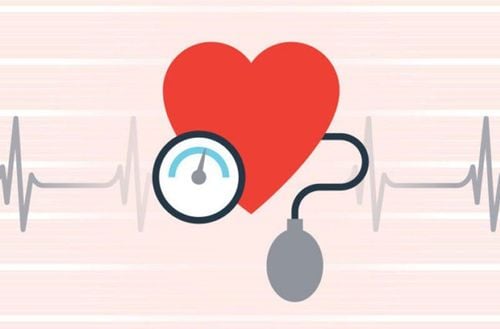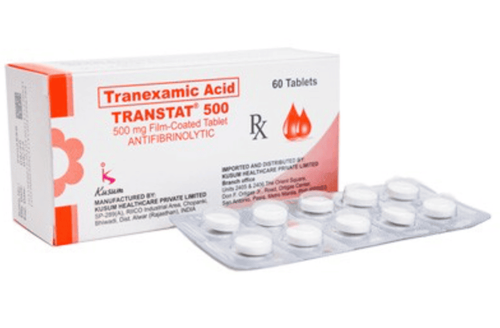This is an automatically translated article.
The article was consulted with Specialist Doctor I Nguyen Thi My Linh - Neonatologist - Department of Pediatrics - Neonatology - Vinmec Danang International General Hospital.1. Nosebleeds in children
Nosebleeds, also known as nosebleeds, occur when small blood vessels in the nose burst and bleed. This is a very common phenomenon, most commonly seen in children 2-10 years old. Currently, it is not clear why nosebleeds are more common in the morning. In most cases of nosebleeds in children, there is no obvious cause. However, trauma is still the most common reason because the nasal mucosa is nourished by many small blood vessels located very shallowly, close to the surface. Most nosebleeds in children cause only minor discomfort. Your child may have several episodes of nosebleeds for several weeks. Very rarely, children lose blood to the point of anemia. This can happen if the baby has had severe blood loss several times over a few weeks.2. Classification of nosebleeds
Nosebleeds in children are divided into 2 types, anterior nosebleeds and posterior nosebleeds:2.1 Anterior nosebleed
Anterior nosebleeds account for about 90% of cases, and are very common in regions with dry, cold climates and environments (eg, prolonged use of air conditioning, use of heaters). Prolonged dryness of the mucous membranes causes the nasal septum to scab, crack, and lead to bleeding. The most common site of bleeding from the anterior nose is the Kieselbach plexus in the lower part of the nasal septum. This location contains many small blood vessels and capillaries that are very fragile, when blowing your nose strongly or when there is a local trauma, impacts such as pinching or picking your nose can also cause nosebleeds first.Anterior nosebleeds are usually unilateral. Nosebleeds mainly flow anteriorly and outward (a small amount may run down the throat). Persistent bleeding, not much blood. The bleeding will usually stop after first aid measures are taken. In case of severe anterior nosebleed, it is necessary to "burn" the pulse point with silver nitrate or another chemical.
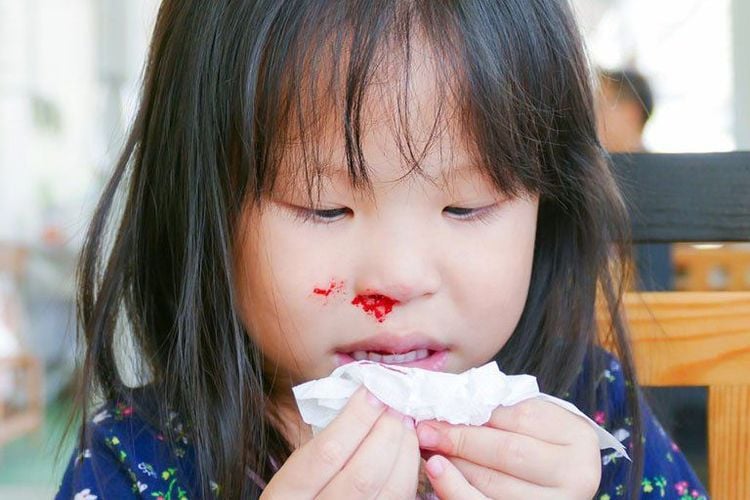
2.2 Posterior nosebleed
Posterior nosebleeds account for about 10% of cases, often involving blood vessels higher and deeper in the nose. While posterior nosebleeds are uncommon in children, they are more dangerous and more difficult to control and often require medical intervention. Posterior nosebleeds are common in the elderly, people with high blood pressure or in trauma to the nose and face.Often bleeding occurs on both sides. Nosebleeds will flow inward to the back and mainly down the throat. Bleeding profusely, which can be fatal. Control posterior nosebleeds by inserting nasal wicks or constricting blood vessels.
3. Causes of nosebleed
There are many causes of nosebleeds in children including:Blood vessels in the nose are often very sensitive and can burst in cold, dry weather, or when a child is heated by a parent or placed in an air-conditioner. a long time. Allergies or infections in the nasopharynx and sinuses. Nose picking, nose rubbing or other local impact or trauma. Blow your nose too hard. When the child puts foreign objects into the nose, for example, a battery, a bead,... Pushing hard when having a bowel movement in a state of constipation. The nasal septum is crooked. Breathe oxygen through a nasal cannula. Use certain medications, such as anti-inflammatory drugs, nasal sprays. Nose fracture or skull base fracture (particular care should be taken if nosebleeds occur after head trauma). Bleeding disease or blood clotting disorder. Tumors (benign and malignant) can cause nosebleeds, but these are very rare.
4. Children with nosebleeds what to do?
With proper care for a child with a nosebleed, most cases of anterior nosebleeds will stop on their own. After the child has calmed down, take the following first aid steps:Ask the child to blow his nose gently to remove blood clots that have formed inside the nose. Blowing your nose can cause more bleeding for a while but then it stops. If the child is too young, skip this step. Place the child in an upright sitting position, with the head and neck tilted slightly forward. This position will help prevent blood from flowing down the throat, avoid stimulating vomiting and diarrhea. Do not place the child in a position with his head tilted back or lying down or with his head between his knees. Use two fingers, the thumb and index finger, to squeeze the sides of the child's nose (the soft tip of the nose). Do not squeeze the spine of the child's nose because doing so will not help stop the bleeding, nor should you press on one side of the nose, even if the bleeding is only on one side. Squeeze the wings of the nose for 10 minutes, use the watch to see the time correctly. In the meantime, let your child watch TV or read a book to relax. Do not release your hand too often to check if the bleeding has stopped, as this can cause bleeding time to stop and prolong bleeding, as it takes time for the blood to form a clot. If you want, you can apply a cold compress or place a cool washcloth on the base of your child's nose and cheeks, or give him an ice cube to suck on. This can help constrict blood vessels in the nose and slow bleeding. However, this should only be used when the child agrees to cooperate. Instruct the child to spit out blood that has accumulated inside the mouth, because swallowing blood can cause the child to vomit. Giving your child some cool water to drink helps relieve stress and reduces the smell of blood in the mouth. After 10 minutes of squeezing the nostrils, you can release your hand to see if the bleeding has stopped. If bleeding continues, repeat the above steps again. Topical vasoconstrictors such as afrin or rhinex can be used to stop bleeding.
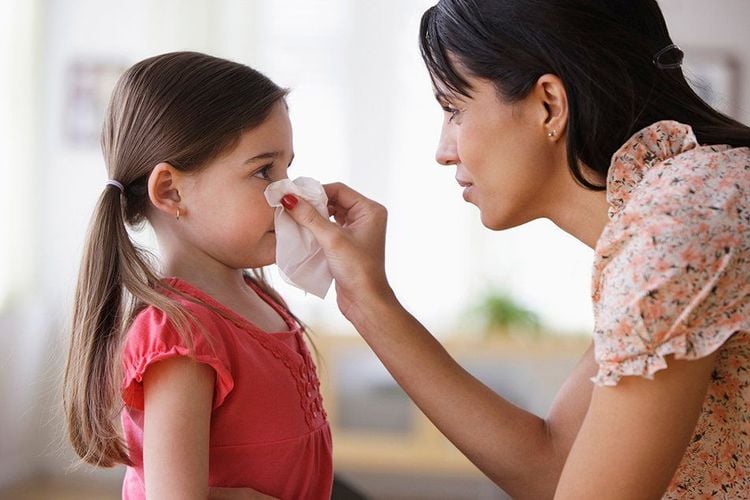
5. When is a nosebleed in a child serious?
Nosebleeds in a child can be serious and take your child to a medical facility immediately in the following cases:Does not stop bleeding after applying first aid measures within 20 minutes. Repeated nosebleeds. Rapid nosebleed or large amount of blood loss (more than a full cup). Bleeding from trauma, eg a fall or a hard impact on the face. Feeling weak, dizzy. Nose bleeds into the back of the throat, not to the front of the nose, even when the child is sitting with his head tilted forward. In case of bleeding later on, a doctor's help is needed. Nosebleeds when the child has used a new medicine. Nosebleeds can be accompanied by bruises all over the body or with bleeding elsewhere, such as blood in the stool or urine. Are taking anticoagulants. Children with other systemic diseases affecting blood clotting such as kidney disease, liver disease, hemophilia. Recently undergone chemotherapy.
6. Caring for a child with a nosebleed
The emergency treatment of nosebleeds is based on the above first aid principles. Medical staff will instruct parents on how to give first aid to the child's nose to stop bleeding. If the above first aid measures do not work, and the child's nose is still bleeding, the doctor will conduct a blood test to find the point of bleeding. The doctor may then:Apply ointment to the inside of the child's nose to stop the bleeding. Use silver nitrate or other chemicals to "burn" the blood vessels. Apply the nose wick trick. Prescribe antibiotics to prevent bacterial infections. In cases of heavy bleeding, the child will need a blood test to determine how much blood has been lost. Care for nosebleeds in young children after treatment:
If the child has had a nose wick inserted, it is necessary to keep the nose wick for 24-48 hours to check. Parents should not attempt to remove the wick from their child's nose on their own. After about 48 hours, parents need to take the child to the hospital to be examined by a doctor and removed the wick. If the nose wick falls out on its own and the child is no longer having a nosebleed, no need to go to the hospital. If you don't need a nasal wick, your doctor may order an antibiotic ointment to be applied inside your nose for a week to help prevent bacterial infection. If the child's nose is dry and cracked, parents can use a cotton swab to gently apply a little vaseline grease to the inside of the nose. You can do this 2 times per week. Do not use this measure in children under 4 years old, because children often wiggle and can cause injury. With proper treatment, most patients make a full recovery with no long-term effects.
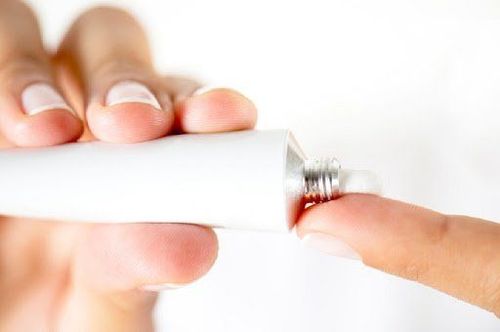
7. Measures to prevent recurrent nosebleeds
Measures to prevent recurrent nosebleeds include:Children should rest for at least 2 hours after nosebleeds (gentle activities such as reading, painting or watching TV). After a child has a nosebleed, parents should not give the child hot drinks, hot foods, or hot baths for 24 hours. Remind your child not to pick or scratch or blow his nose for 24 hours (one week if the child has had a pulse point 'burned'). Within a week, children should not do vigorous exercise or sports such as running, avoid carrying heavy objects. If children are constipated, parents should give them plenty of water and increase the amount of fiber in the diet. If necessary, ask the doctor to give stool softeners so that the child does not have to push. The nasal mucosa can be moistened with a moisturizing cream or physiological saline. In case of recurrent nosebleed, treatment should be carried out by:
Let the child blow his nose to expel the clots. Use a topical vasoconstrictor such as Afrin or Rhinex instilled into the bleeding nostril. Repeat the first aid steps mentioned above and squeeze the nostrils for 10 minutes. Once a child has had a previous nosebleed, that site will be much more sensitive and it is easy to bleed again if the nasal mucosa has not fully recovered. At this point, there will be a vicious cycle of nosebleeds. From the place where only a few weeks appear once a nosebleed, when the nasal mucosa is severely damaged, the child may have continuous bleeding from 4-5 times. The phenomenon of nosebleed only stops when the nasal mucosa completely heals. Therefore, it is very important to apply measures to prevent nosebleeds first. Parents should always keep the nasal mucosa of the child always moist, by applying a little vaseline cream to the anterior part of the nasal septum, but the frequency of application depends on the child. If your child has frequent nosebleeds, it should be applied twice a day until the nosebleed is gone for several days in a row. Other cases can be applied to the child when there is a need:
Give the child enough water to drink. Avoid trauma to the nasal septum. Use a nebulizer to help humidify the air. Remember to clean the machine regularly. Use physiological saline spray or nasal drops to help moisten the mucous membranes. This is especially important for children with frequent colds, stuffy noses or allergies. If the nosebleed persists, parents should take the child to see an otolaryngologist.
In summary, nosebleeds in children are very common and most are not serious. However, if the child has recurrent nosebleeds or does not stop after 20 minutes of treatment,... then parents need to take their child to a medical facility to be examined, assessed the condition as well as taking measures. timely intervention.
With many years of experience in examining and treating diseases in children, now the Pediatrics Department at Vinmec International General Hospital has become one of the major health care centers, capable of examining , screening and treatment of many specialized diseases in children. Therefore, if the child shows signs of frequent nosebleeds and cannot be stopped, parents can take the child to Vinmec International General Hospital for examination and receive support and advice from doctors and nurses. medical professionals.
Please dial HOTLINE for more information or register for an appointment HERE. Download MyVinmec app to make appointments faster and to manage your bookings easily.





